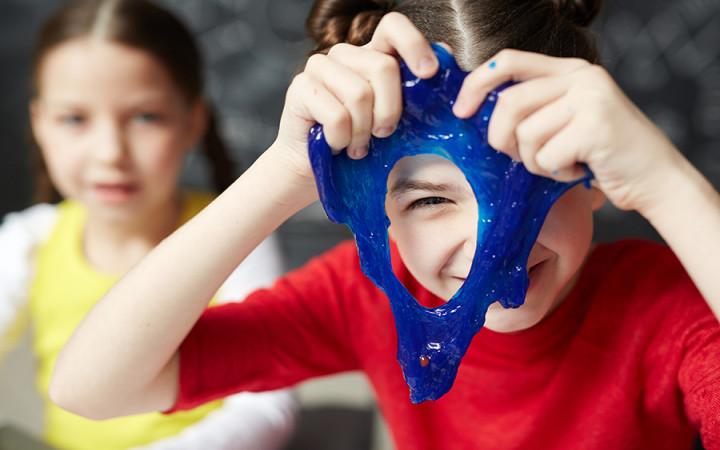Today’s Wonder of the Day was inspired by Rosie. Rosie Wonders, “How is slime formed” Thanks for WONDERing with us, Rosie!
We were fishing in the Wonderopolis pond the other day when we overheard an interesting conversation between a frog and her child:
Momma Frog: I need to go to the grocery store. Where's my shopping list?
Baby Frog: Here it is! Make sure you get everything on the list.
Momma Frog: Let me see…glue…borax…saline solution…liquid starch…what in the world? Why do you want all that stuff?
Baby Frog: To make slime!
Momma Frog: But we're frogs! Aren't you slimy enough already?
Baby Frog: No way! A frog can never be too slimy. Besides, dry weather is on the way…
Momma Frog: You kids these days!
The fish weren't biting today, so we didn't stick around to see whether the little frog got his slime-making supplies. Their conversation did pique our interest in slime, though.
Unless you've been hiding out under a rock the last year or so, you've probably felt slime, played with slime, or made slime yourself. With the help of thousands of YouTube videos, kids around the world have rediscovered the ages-old joy of making the substance we call slime.
Did you know that making slime is a great learning experience, though? It is! Let's take a closer look at the chemistry that changes a variety of substances into ooey, gooey slime.
Slime is what scientists call a non-Newtonian fluid. That means it doesn't act like a regular liquid like water (a Newtonian fluid). Instead, slime sometimes flows like a liquid and at other times acts like a solid.
The basic ingredient in most slime recipes is polyvinyl acetate (PVA) glue, such as basic white glue you use at school. This type of glue is a polymer, which consists of long chains of molecules called monomers.
The long chains of molecules in a polymer slide over and past one another easily. This allows glue to flow freely from its bottle.
However, if you add certain chemicals, known as activators in slime recipes, chemical bonds called cross-links will begin to form between the polymers. These bonds give slime its curious character.
When its polymers are allowed to relax and slide past each other, slime will flow like a liquid through your fingers. When you press, twist, squeeze, or otherwise put pressure on the polymers, they entangle, forming more cross-links and acting more like a solid in the process.
Activators usually include some form of the element boron. For example, common slime activators include borax (a popular laundry detergent and household cleaner), saline solution, and liquid starch.
Slime can be made from a wide variety of basic polymers and activators, resulting in a vast array of different recipes. You can also add in other substances, such as shaving cream, glitter, and food coloring to make your slime fluffy, sparkly, and multicolored!




